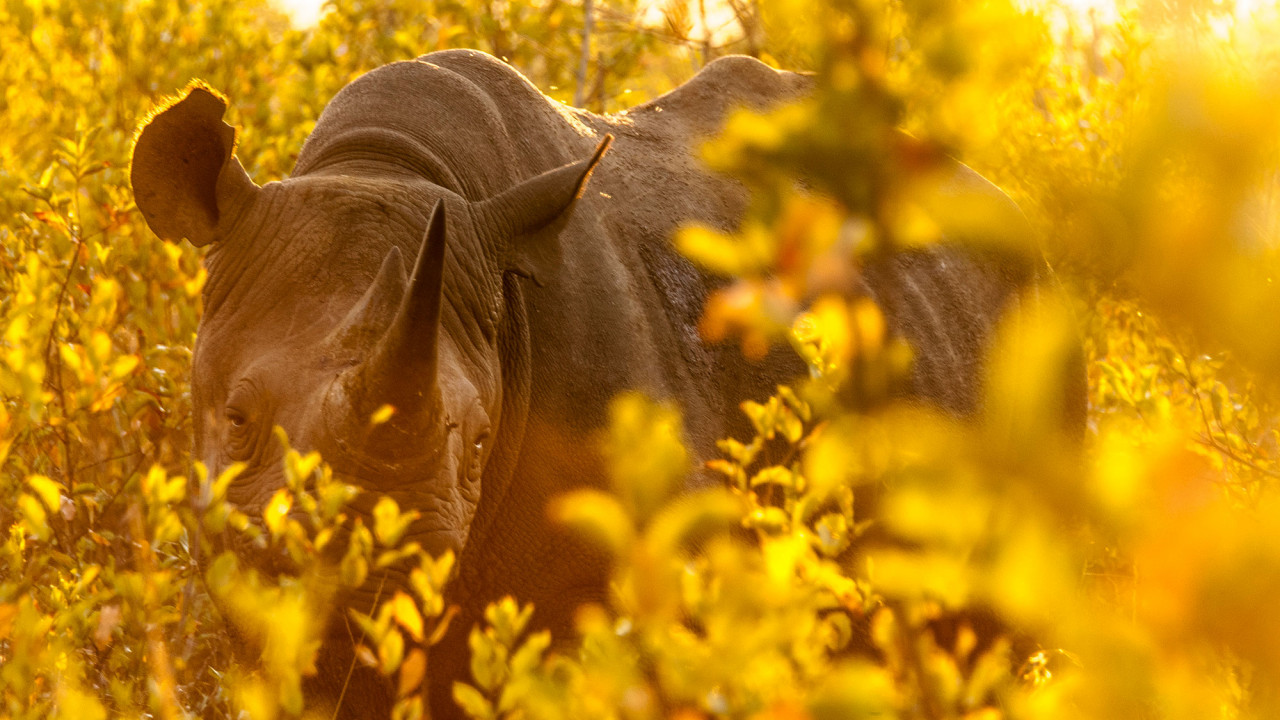
As many of you will know, the Black Rhino and White Rhino are both critically endangered due to heavy poaching for their horn.
Having the privilege of seeing a rhino in the wild is one of the most incredible experiences you can have, particularly if you are lucky enough to see one on foot.
But, how many of you know the difference between these two animals?
---
(Psst, this article is part of a mini-series: You're reading Part 3 on how to tell apart the iconic white and black rhino. Part 1 will give you an introduction into how to use different animals to find predators, and Part 2 explains how to distinguish between Africa's big cat tracks.)
You’d be forgiven for assuming that the Black Rhino is black and the White Rhino is white, or that one was perhaps darker than the other. This, however, is not the case. Their skins are actually remarkably similar in colour!
The reason for these animals being named White and Black is widely debated, however the most accepted story is that it was simply a misinterpretation from the Dutch word ‘wijd’ meaning wide (due to the lip - explained below). The British, (not known for their language skills) assumed the Dutch were saying ‘White’.
Needless to say, the name stuck and the British simply called the other type of Rhino ‘Black’ as it’s the opposite of white! Below is an image of a black rhino (on the left) and a white rhino (on the right):
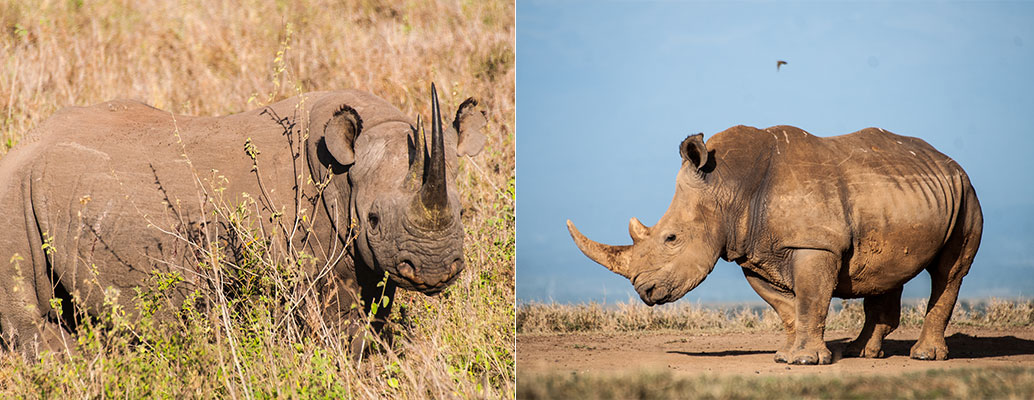
The main differences between these animals can be split into their physical differences, their habitat/dietary differences and their behavioural differences:
Physical Differences:
Size: White Rhino are much larger than Black Rhino. A White Rhino bull weighs in at 2,400 kg whereas a Black Rhino bull weighs up to about 1,500 kg.
Mouths: To help them better feed on their preferred foods, the lips of these two animals have adapted to be different. A White Rhino has a flat/square lip to help it chomp up vast quantities of grass, whereas a Black Rhino has a hooked lip to help it pick through leaves and branches.
Ears: Due to White Rhino having their heads low to the ground most of the time to feed, they rely heavily on hearing. As such they have adapted to have longer, more funnel like ears to help them hear. Black Rhino predominantly feed from bushes and therefore have their heads up most of the time. As a result have smaller rounder ears.
Backs: A Black Rhino has a very concave back compared to a White Rhinos mostly flat back. Exactly why the animals have evolved in this way is hard to say.
Horns: While 3 of the 5 Rhino species have two horns, the sizes and ratio between them is different. White Rhino tend to have a long front horn and very short back horn whereas a Black Rhino will often have two fairly similar length horns.
Tracks: Importantly, when tracking these animals it is vital to check the size of the track. A Black Rhino has a track that is about the size of an adult human hand whereas a White Rhino's track is much larger. White Rhino tracks also often have many lines/creases in their prints. The Black Rhino prints are much smoother. Finally the back of a White Rhino track has a distinct W shape to it, whereas the Black Rhino print is flat.
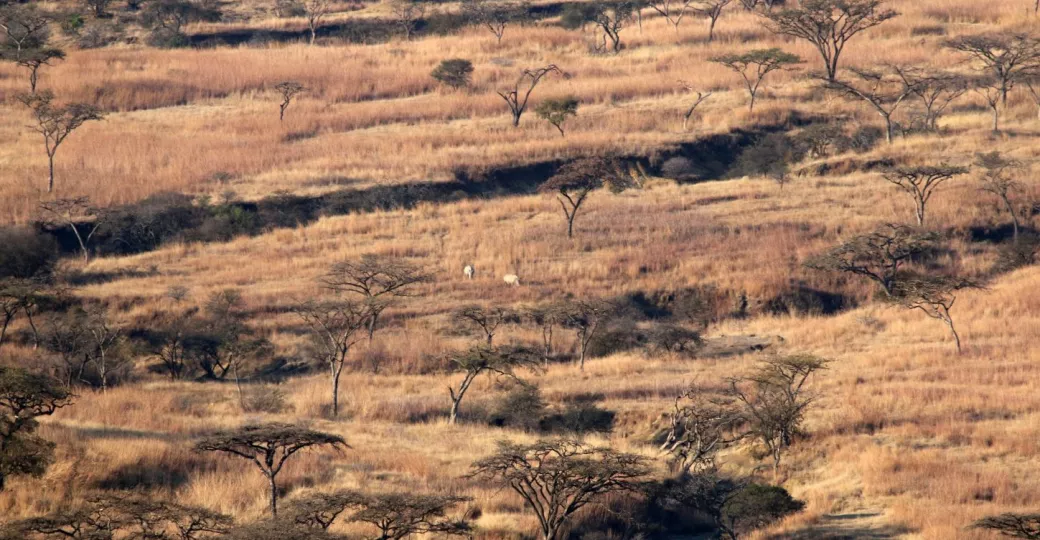
Rhinos browsing in the plains at Phinda Private Game Reserve - Toby Pheasant
Habitat/Dietary Differences:
White Rhino are grazers (grass feeders) while Black Rhino are browsers (feed on shrubs and leaves). As such, one tends to find White Rhino in more open savannah and Black Rhino in thickets.
One of the main products of feeding is, of course, dung. With different diets, the dung also differs between these two animals.
White Rhino dung is usually very black-green in colour and consists entirely of grass.
Black Rhino on the other hand usually have much redder dung due to the tannin from the branches they are eating. In their dung you can also find lots of little twigs cut off at perfect 45-degree angles.
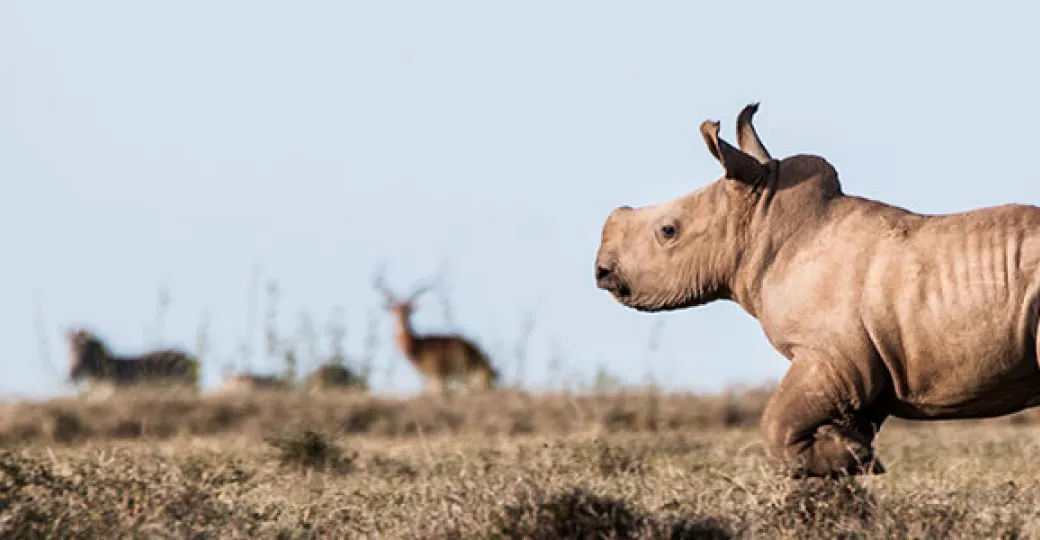
A white rhino calf seen in Kenya - Toby Pheasant
Behavioural Differences:
Interestingly, Black Rhino calves will tend to walk behind their mothers whereas White Rhino calves will tend to walk in front of their mothers. This is again due to the habitat they mostly frequent. Black Rhino trying to escape danger will run through thick bush, so it is better for the mother to be in front to forge an escape route.
A White Rhino can encounter danger from all angles so it’s better for the mum to be able to keep an eye on her calf so she can protect it.
Black Rhino are known to be a lot more aggressive than White Rhino with a much shorter temper. Exactly why this is, is hard to say, although there are some beliefs that it is to do with their diet - especially due to eating toxic trees such as euphorbias and tambotis.
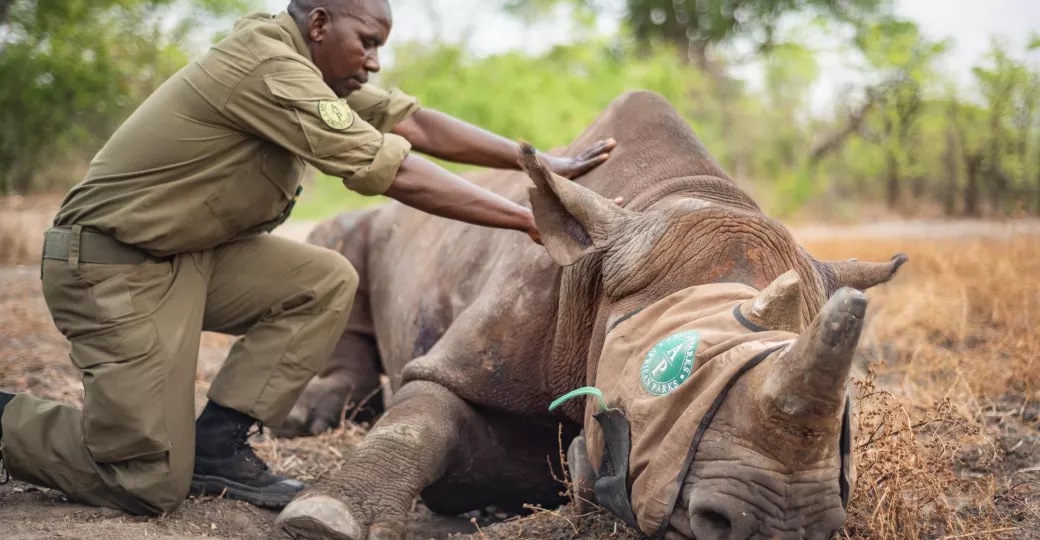
The reintroduction of black rhino to Malawi's Liwonde National Park thanks to African Parks - Kyle de Nobrega
While there are many differences in between White and Black Rhino, sadly they are both being poached for their horn. As it stands there are thought to be about 16,000 White Rhino and 6,400 Black Rhino left in Africa.
With the rate of poaching as it is, there is a very real chance that Rhino will go extinct in our lifetime.
If you’re interested in finding out more about the rhino and what you can do to help protect them, don’t hesitate to send us an email at safari@bonamy.co.uk.

Toby Pheasant
Toby first visited Africa at the tender age of four when he accompanied his family on their first of several safari holidays. From that moment on Toby’s love affair with Africa’s nature and wildlif...
View profileNever miss a notebook entry with our newsletter


